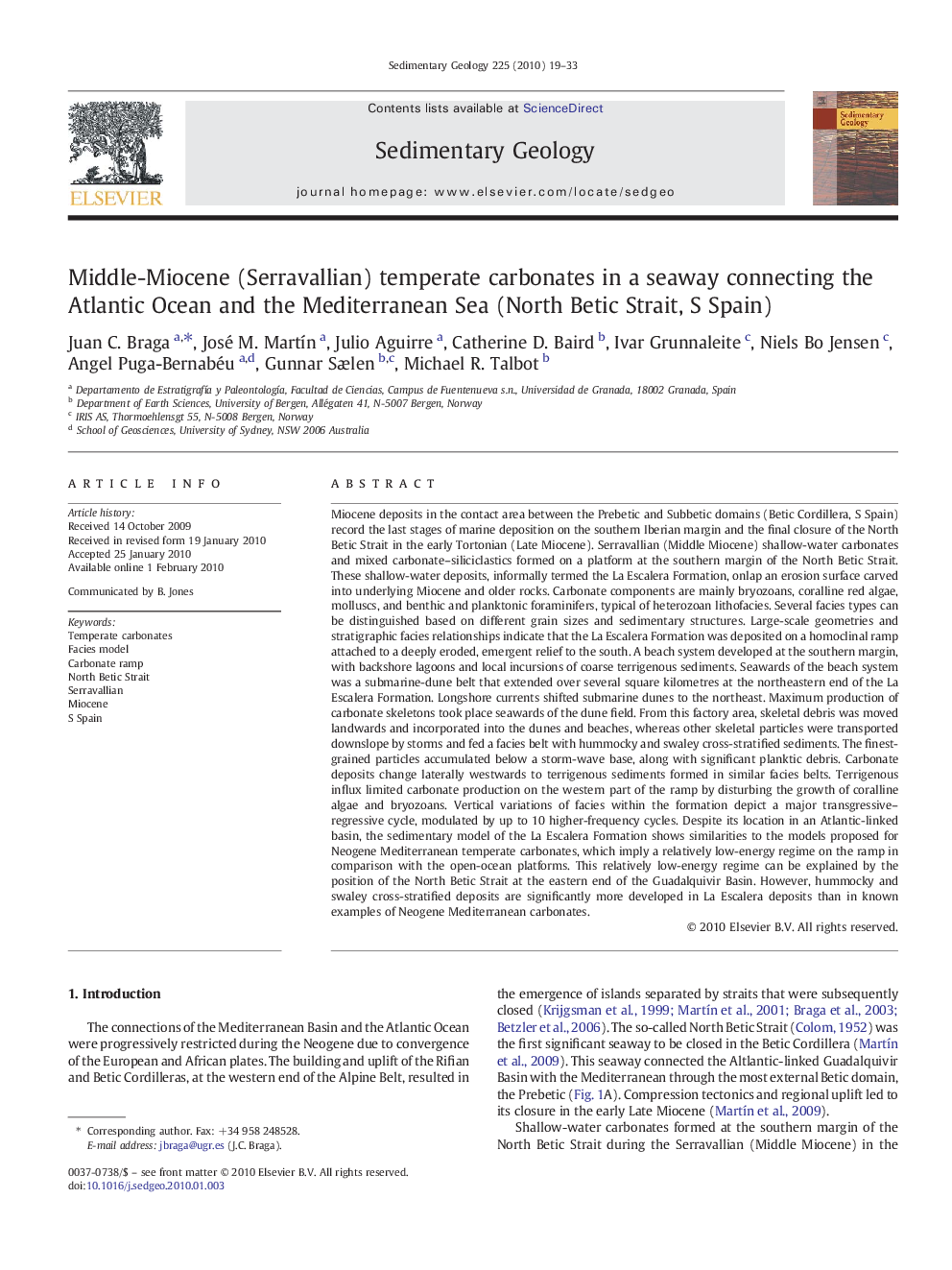| کد مقاله | کد نشریه | سال انتشار | مقاله انگلیسی | نسخه تمام متن |
|---|---|---|---|---|
| 4690315 | 1636128 | 2010 | 15 صفحه PDF | دانلود رایگان |
عنوان انگلیسی مقاله ISI
Middle-Miocene (Serravallian) temperate carbonates in a seaway connecting the Atlantic Ocean and the Mediterranean Sea (North Betic Strait, S Spain)
دانلود مقاله + سفارش ترجمه
دانلود مقاله ISI انگلیسی
رایگان برای ایرانیان
کلمات کلیدی
موضوعات مرتبط
مهندسی و علوم پایه
علوم زمین و سیارات
فرآیندهای سطح زمین
پیش نمایش صفحه اول مقاله

چکیده انگلیسی
Miocene deposits in the contact area between the Prebetic and Subbetic domains (Betic Cordillera, S Spain) record the last stages of marine deposition on the southern Iberian margin and the final closure of the North Betic Strait in the early Tortonian (Late Miocene). Serravallian (Middle Miocene) shallow-water carbonates and mixed carbonate-siliciclastics formed on a platform at the southern margin of the North Betic Strait. These shallow-water deposits, informally termed the La Escalera Formation, onlap an erosion surface carved into underlying Miocene and older rocks. Carbonate components are mainly bryozoans, coralline red algae, molluscs, and benthic and planktonic foraminifers, typical of heterozoan lithofacies. Several facies types can be distinguished based on different grain sizes and sedimentary structures. Large-scale geometries and stratigraphic facies relationships indicate that the La Escalera Formation was deposited on a homoclinal ramp attached to a deeply eroded, emergent relief to the south. A beach system developed at the southern margin, with backshore lagoons and local incursions of coarse terrigenous sediments. Seawards of the beach system was a submarine-dune belt that extended over several square kilometres at the northeastern end of the La Escalera Formation. Longshore currents shifted submarine dunes to the northeast. Maximum production of carbonate skeletons took place seawards of the dune field. From this factory area, skeletal debris was moved landwards and incorporated into the dunes and beaches, whereas other skeletal particles were transported downslope by storms and fed a facies belt with hummocky and swaley cross-stratified sediments. The finest-grained particles accumulated below a storm-wave base, along with significant planktic debris. Carbonate deposits change laterally westwards to terrigenous sediments formed in similar facies belts. Terrigenous influx limited carbonate production on the western part of the ramp by disturbing the growth of coralline algae and bryozoans. Vertical variations of facies within the formation depict a major transgressive-regressive cycle, modulated by up to 10 higher-frequency cycles. Despite its location in an Atlantic-linked basin, the sedimentary model of the La Escalera Formation shows similarities to the models proposed for Neogene Mediterranean temperate carbonates, which imply a relatively low-energy regime on the ramp in comparison with the open-ocean platforms. This relatively low-energy regime can be explained by the position of the North Betic Strait at the eastern end of the Guadalquivir Basin. However, hummocky and swaley cross-stratified deposits are significantly more developed in La Escalera deposits than in known examples of Neogene Mediterranean carbonates.
ناشر
Database: Elsevier - ScienceDirect (ساینس دایرکت)
Journal: Sedimentary Geology - Volume 225, Issues 1â2, 15 March 2010, Pages 19-33
Journal: Sedimentary Geology - Volume 225, Issues 1â2, 15 March 2010, Pages 19-33
نویسندگان
Juan C. Braga, José M. MartÃn, Julio Aguirre, Catherine D. Baird, Ivar Grunnaleite, Niels Bo Jensen, Angel Puga-Bernabéu, Gunnar Sælen, Michael R. Talbot,